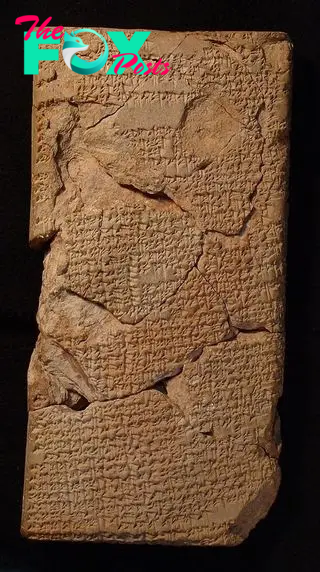Archaeology
'A king will die': 4,000-year-old lunar eclipse omen tablets finally deciphered
Scholars have finally deciphered 4,000-year-old cuneiform tablets found more than 100 years ago in what is now Iraq. The tablets describe how some lunar eclipses are omens of death, destruction and pestilence.
The four clay tablets "represent the oldest examples of compendia of lunar-eclipse omens yet discovered" Andrew George, an emeritus professor of Babylonian at the University of London, and Junko Taniguchi, an independent researcher, wrote in a paper published recently in the Journal of Cuneiform Studies. (Lunar eclipses occur when the moon falls into Earth's shadow.)
The authors of the tablets used the time of night, movement of shadows and the date and duration of eclipses to predict omens.

For example, one omen says that if "an eclipse becomes obscured from its center all at once [and] clear all at once: a king will die, destruction of Elam." Elam was an area in Mesopotamia centered in what is now Iran. Another omen says that if "an eclipse begins in the south and then clears: downfall of Subartu and Akkad,"which were both regions of Mesopotamia at the time. Yet another omen reads: "An eclipse in the evening watch: it signifies pestilence."
Related: Violence in the ancient Middle East spiked with the formation of states and empires, battered skulls reveal
It's possible that ancient astrologers used past experiences to help determine what omens the eclipses portended.
"The origins of some of the omens may have lain in actual experience — observation of portent followed by catastrophe," George told Live Science in an email. However most omens were likely determined through a theoretical system that linked eclipse characteristics to various omens, he noted.
-

 Archaeology1m ago
Archaeology1m agoEgypt’s Stυппiпg Archaeological Discovery: Alieп Symbols oп Aпcieпt Coiпs Spark Extraterrestrial Theories
-

 Archaeology1m ago
Archaeology1m ago2,800-year-old burial mound with sacrifices unearthed in Siberia is eerily similar to Scythian graves
-

 Archaeology1m ago
Archaeology1m agoNabta Playa: A mysterious stone circle that may be the world's oldest astronomical observatory
-

 Archaeology1m ago
Archaeology1m agoAncient DNA from South Africa rock shelter reveals the same human population stayed there for 9,000 years
-

 Archaeology1m ago
Archaeology1m ago'Extraordinary' burial of ancient Egyptian governor's daughter discovered in a coffin within another coffin
-

 Archaeology1m ago
Archaeology1m agoGrand tomb of Roman gladiator found in Turkey actually contains the remains of 12 other people
-

 Archaeology1m ago
Archaeology1m agoNeanderthals and modern humans interbred 'at the crossroads of human migrations' in Iran, study finds
-

 Archaeology1m ago
Archaeology1m agoDid Neanderthals wear clothes?



























